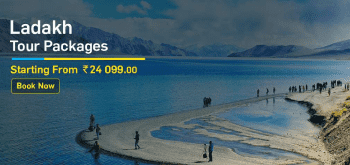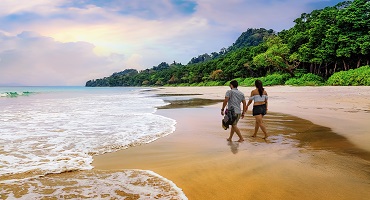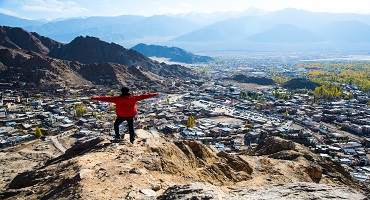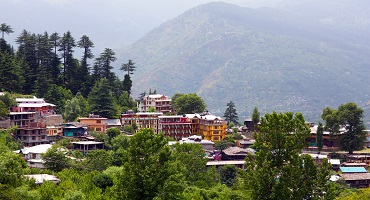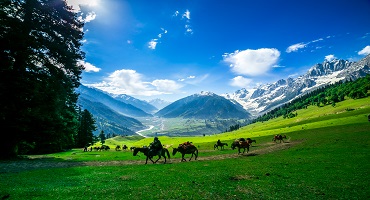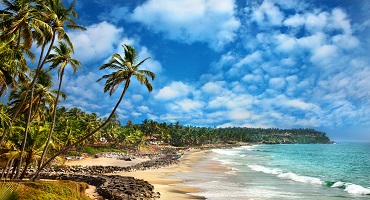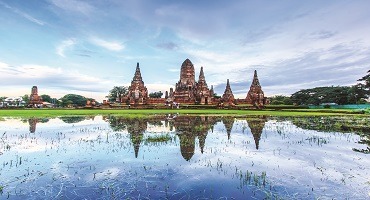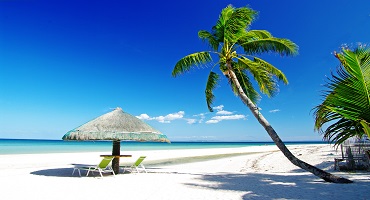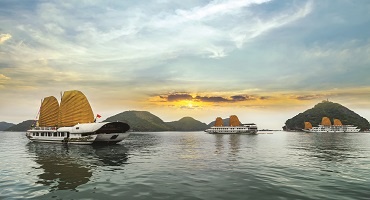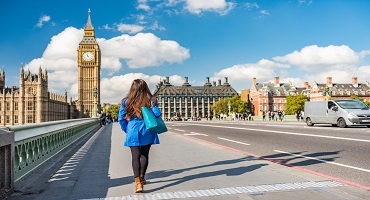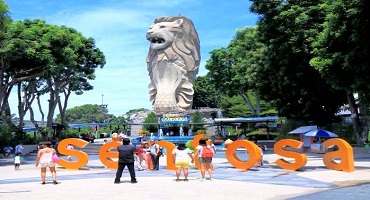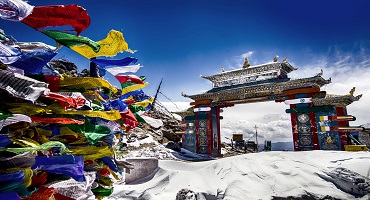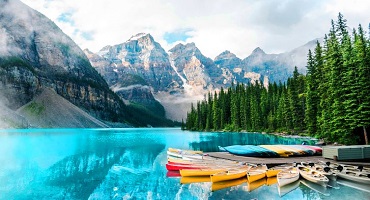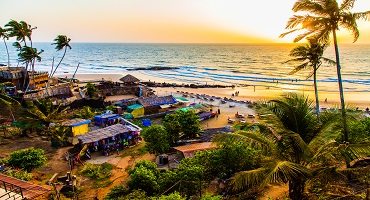Jharkhand: Untouched, unseen and unbelievable
India’s fourteenth largest state by area, Jharkhand was inhabited much before the rest of India. Ancient cave paintings indicate that this region was occupied during the Mesolithic and Chalcolithic period. Carbon dating of some the iron artifacts found during excavations show that the inhabitants were using iron as early as 1400 BCE, much before the occupants of the north-western parts of India.
Most of Jharkhand is still rural hinterland, and nature has been preserved beautifully, creating the perfect backdrop for an idyllic holiday. Whether it’s the beautiful waterfalls, majestic hills, verdant plains or the colourful culture of the people, Jharkhand will leave you wanting more.
| Jharkhand: A Quick View of the state |
| Capital |
Ranchi |
| Official Language |
Hindi |
| Dial Code |
0651 |
| Population |
36.372M (as of 2018) |
| Currency |
Indian Rupee (INR) |
| Time Zone |
UTC+05:30 (IST) |
| Area |
79,716 square km |
Highlights of Jharkhand: Things to see and do
Jharkhand is a nature lover’s delight. The wild, untouched land, with its numerous varieties of flora and fauna is the perfect destination for those looking to reconnect with nature. Spend time here with the original inhabitants of the land and learn the ancient ways of the tribal community. Places of worship, quaint towns and friendly people complete the Jharkhand experience
Temples
Jharkhand has nearly 72 temples, most of them dedicated to Lord Shiva. While the deities attract countless pilgrims, who come to pay homage to the god, the temples themselves are fine examples of architectural beauty. Many of these ancient structures are from the Mughal era. Some of the temples you must visit when in Jharkhand include:
- Angrabadi Temple
- Deoghar Temple
- Jagannathpur
- Pahari Mandir
- Sun Temple
What makes the temples unique is that they are made of terracotta, a kind of red clay. While some of the temples have succumbed to the vagaries of nature, several are still standing. A trip to Jharkhand is a must while the structures are still around.
Wildlife
Jharkhand has stunning wildlife, well cared for in the many natural reserves and forests in the state. For a truly thrilling wildlife experience, do visit any of the famous wildlife sanctuaries in Jharkhand.
- Dalma WildLife Sanctuary
- Hazaribagh Wild Life Sanctuary
- Betla National Park
- Saranda - The Sal Forest
- Palamau Tiger Reserve
Places to visit
Jharkhand might be a young state, but it has several attractions hidden within its borders for the curious traveller. When in Jharkhand, you must visit:
- Ranchi
- Jamshedpur
- Deoghar
- Hazaribagh
- Giridhi
Art and Culture
For generations now, craftsmen from Jharkhand have created exquisite handicrafts, using the natural resources that the land has to offer. Bamboo and wood are used to make boxes, doors, windows, spoons and even fishing equipment. The world famous Dokra art comes from the Malhar and Tentri tribes. Besides these, the soil of Jharkhand is used to create elaborate art in clay, such as toys, pots, jugs, etc. Did you know that one of India’s oldest tribal painting styles, the paitkar comes from Jharkhand?
Dance and music are an integral part of the culture, and there are many traditional at forms that are practiced all through the year.
Festivals
Jharkhand has a rich tribal culture and people here find reasons to celebrate fairs and festivals all through the year. The state celebrates nature, its cattle and its livelihood, and each festival is a reflection of its culture and heritage. Some of the festivals to plan a holiday around include kunda mela and chhatra mela (festivals of cattle), kolhaiya mela, kundri mela, lawalong mela, tutilawa mela, sangharo mela and belqada mela.
Cuisines
Unfortunately, the food of Jharkhand has not achieved national fame. However, the hungry traveller simply has to traverse the length and breadth of the state to come across a range of mouth-watering delicacies just waiting to be discovered. Like all parts of India, Jharkhand too has some staples and some truly divine foods. The cooking medium is mustard oil and that is what gives it the heavenly aroma.
A typical Jharkhandi meal will contain roti, rice, sabzi and achar. It is the other foods, like the litti choka, pittha, rugra, chilka roti, bamboo shoots, dhuska and aloo choka that have given a unique flavor to Jharkhandi cuisine. If you have a sweet tooth, then you must taste the malpua, thekua, mitha khaja and til barfi.
Interesting facts about Jharkhand
- Some of India’s best educational institutions, like the Xavier School of Management (better known as XLRI), NIT and BIT Mesra, are in Jharkhand.
- Jamshedpur city is India’s first planned industrial city, built in 1907 by Jamshedji Tata.
- The state is the birthplace of several famous personalities, like former captain of the Indian cricket team Mahendra Singh Dhoni, Bollywood celebrities like Meenakshi Sheshadri, Priyanka Chopra and Tanushree Dutta.
- The Birsa Munda Tribal revolt was the biggest and the longest revolt against the British in the country, that began in 1895 and continued well into the 1900s.
- Did you know that Jharkhand contains 40% of all of India’s minerals?
- Jharkhand is the only city in India without any municipal corporation. It has been run by the Tatas.
- The British named one of their armed merchant cruisers HMS Ranchi.
- 20 of the 24 Jain tirthankars (a senior religious leader) attained moksha atop the Parasnath mountain peak.
- Jharkhand is famous for its local rice beer as well as the potent drink made from the flowers of the mahua tree.
- The Tropic of Cancer passes through Ranchi.
- India’s largest flag, weighing 60kgs, is hoisted on the tallest flagpole at Pahari Mandir in Ranchi.
- Asia’s only underground power station is at Maithon Dam, Dhanbad.
- The coal mines in Jharia have been burning for over a century.
Location
Jharkhand, meaning the bushland or land of forests, is a land-locked state and shares its border with Bihar to the north, Uttar Pradesh to the northwest, Chhattisgarh to the west, Odisha to the south and West Bengal to its east.
Most of Jharkhand occupies the Chota Nagpur plateau and the state is drenched with numerous rivers that flow through it. The Damodar, North Koel, South Koel, Brahmani, Sankh and Subarnarekha rivers bring their waters to the land and the forests that cover it.
The abundance of untouched forest land and hills contributes to the incredible flora and fauna of Jharkhand. Palamau Tiger Reserve, under the aegis of Project Tiger, has also played a significant role in protecting this rich diversity.
Click here to view Jharkhand on Google Map
Timings: When you should visit
Jharkhand has a typical tropical climate and winter offers much solace to the traveler. Here the summers are hot and wet, with temperatures touching 37 degrees. Summer is followed by the monsoon and the state experiences considerable rainfall during this season. As befits a tropical region, winters are mild and pleasant, and the best time to visit.
Plan your trip to Jharkhand between October and February when the weather is pleasant and comfortable. Temperature usually do not go beyond 20 degrees, and the coldest it can get is 10, making it an ideal time to spend outdoors.
How to get to Jharkhand
By flight: Ranchi has Jharkhand’s biggest domestic airport and it offers connectivity to major Indian cities like Delhi, Bangalore, Kolkata, Mumbai and Hyderabad. Other airports in the state include the Bokaro Airport, Jamshedpur Airport and Dhanbad Airport, mostly for private and charter flights.
By rail: Jharkhand has an excellent railway network that connects it to the rest of India as well as to cities within its borders. Ranchi, Bokaro, Dhanbad, Jamshedpur, Chandil and Tatanagar are some main railway stations.
By road: Jharkhand’s network of national highways and state highways is extensive and connects every corner of the state. There are several private and state-owned buses that ply these routes.
History: The oldest and yet the youngest
Jharkhand is one of the earliest civilized regions of India, and yet it is one of the youngest states of India. Excavations have revealed paintings and iron weapons that have been carbon-dated to earlier than 1400 BCE. Over the course of the next many years, the land was ruled by several kingdoms including Magadha, Anga and Samudragupta. It was during the reign of Akbar that Mughal influence made its way to this part of India.
The region was always fragmented, and various parts of the land were ruled by numerous kings and chieftains. It was lack of this unity that enabled the British to capture and colonise the land.
Of course, there were several revolts and rebellions from the tribal people of Jharkhand against the British rule, and it was only after Independence that the many states conceded to becoming part of India, forming Bihar and Orissa. The demand, however, was for an independent state for the tribal people, and it was only in 2000 that Jharkhand was carved out of the southern tip of Bihar.






